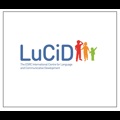
LuCiD Centre study reveals how toddlers master language faster than advanced artificial intelligence systems
Young children learn language with remarkable efficiency that far surpasses even the most sophisticated artificial intelligence systems, according to new research published today in Trends in Cognitive Sciences.
The study, led by Professor Caroline Rowland of the Max Planck Institute for Psycholinguistics in collaboration with researchers from LuCiD, presents a comprehensive framework explaining children's extraordinary language acquisition abilities.
To put this in perspective: if humans learned language at the same pace as ChatGPT, the process would require 92,000 years. Yet children master this complex skill in just a few years through fundamentally different learning processes.
The research represents a major collaboration between LuCiD researchers. The team includes Prof. Caroline Rowland (Max Planck Institute for Psycholinguistics), Prof. Gert Westermann (LuCiD Co-Director, Lancaster University), Prof. Anna Theakston (LuCiD Co-Director, University of Manchester), Prof. Julian Pine (LuCiD Co-Director, University of Liverpool), Prof. Padraic Monaghan (Lancaster University), and Prof. Elena Lieven (University of Manchester).
Revolutionary Research Tools Enable New Insights
Modern technology now allows scientists to study child language development with unprecedented precision. Advanced tools including head-mounted eye-tracking devices and AI-powered speech recognition systems provide detailed observations of how children interact with caregivers and their environment.
However, theoretical understanding of how children transform this sensory information into fluent communication has not kept pace with these technological advances.
The new framework fills this critical gap by integrating findings from multiple disciplines including computational science, linguistics, neuroscience, and psychology. The researchers conclude that children's advantage over AI stems not from the quantity of information they receive, but from their unique approach to processing and learning from it.
The Child Advantage Over Machine Learning
The research identifies key differences between human and artificial intelligence language acquisition. While AI systems learn passively from vast text databases, children engage in active, dynamic learning processes that evolve alongside their developing social, cognitive, and motor abilities.
Children employ multisensory learning, integrating information from sight, sound, touch, smell, and taste to understand their world and develop language skills. This multisensory approach provides rich, coordinated signals that help children decode how language functions.
Professor Rowland emphasises the active nature of children's learning: children do not passively wait for language input but actively explore their environment, creating learning opportunities through hands-on exploration, movement toward interesting objects, and pointing to capture attention.
Broader Implications for Multiple Fields
The research findings extend beyond child development, offering insights for artificial intelligence research, adult language processing studies, and understanding human language evolution.
The work suggests AI development could benefit from incorporating principles observed in child language learning, potentially requiring fundamental redesign of machine learning approaches.
The study, entitled "Constructing language: A framework for explaining acquisition" was published in Trends in Cognitive Sciences and is available online.

